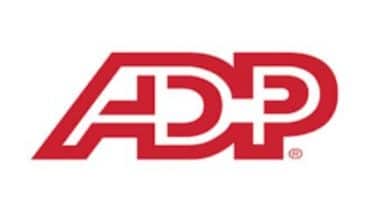One of the first things you’ll do when beginning a business is to write a solid business plan. Everything from an in-depth analysis of your market and pricing strategy to a forecast of your company’s financial performance for the next three years and beyond will be included in your business plan. Therefore, online business plan tools may be useful if you are unsure of where to begin or if you simply wish to streamline the process. In this article, we will look into free business plan tools for startups.
What Is a Business Plan?
The greatest method to put into action a brilliant company concept is to first create a plan. A business plan is a formal document used to attract potential partners and financial backers for a business. It’s your chance to sell your startup’s vision and financial projections to potential backers.
It’s like a road map for your organization, helping you stay on course and adapt your operations as needed to reach your long-term objectives. A business plan can be a live document that evolves as your company does, but it should always contain your primary objectives.
What Are the Types of Business Plans?
Simple business plans are the most common, followed by more formal ones. Traditional business plans are lengthy documents that elaborate on the company’s short- and long-term goals. A simple business plan, on the other hand, will just focus on a few essential KPIs and will provide them in clear detail in order to swiftly exchange data with investors.
#1. Simple Business Plan
Ash Maurya, an expert in business models, created a straightforward business plan format he calls a “lean canvas.” Even though it was first introduced in 2010, this business plan template is still widely used.
Each of the nine areas of a lean canvas is designed to showcase high-value information and analytics that will pique the interest of potential investors.
#2. Traditional Business Plan
It’s not uncommon for conventional plans to be thirty or forty pages in length. A conventional business plan serves as a road map for a startup, outlining the company’s expected development from its inception to the point where it is a well-established enterprise several years from now.
Free Online Business Plan Tools for Startups
We shall be considering top free online business plan tools for start-ups that you need to know.
#1. LivePlan
Overall, we think LivePlan is fantastic because of the fantastic value it provides. As possibly the best free online business plan for startups, among other tools, the program allows you to easily draft plans from anywhere in the world. It outperforms the competition in every respect and at a fraction of the price.
In addition to its user-friendliness, the “cloud-based” platform can be used without committing to a contract or further payments. Even if you cancel LivePlan service for any reason, the developers at Palo Alto Software will keep your account active and your business plan data saved for at least a year so you may pick back up where you left off if you so choose.
#2. Bizplan
The Bizplan platform is a cutting-edge alternative to traditional business planning software, boasting a step-by-step wizard, drag-and-drop modules, automated financial predictions, and the ability to collaborate with colleagues and potential backers. Anyone wishing to create a business plan, whether it be a short-term strategy or a more comprehensive long-term roadmap, will find Bizplan to be an invaluable tool.
The “forever access” plan that Bizplan provides for their free online business plan tools for startups is a major reason for its high ranking. There are more resources available to you at no cost, such as the landing page creator LaunchRock and the comprehensive online course collection Startup Courses.
#3. Enloop
Automated business plan generator with text-sync capabilities, perfect for pitching to banks and investors. Since few other business planning software solutions provide free trials, Enloop is a great option for those who prefer to try before they buy.
In theory, Enloop should streamline the process of business strategy for startup founders. Enloop does this by providing a risk-free, seven-day trial with no requirement for a credit card, and by making the software for creating plans intuitive to use. Their program for writing business plans includes a financial estimate for up to three years in the future.
#4. PlanGuru
If you need software that is both powerful and versatile, PlanGuru fits the bill. The software’s valuation tool is our favorite part, but it’s only available in the desktop edition. With PlanGuru, you may evaluate three distinct approaches to determine your company’s worth. As far as we’re aware, no other business plan software has this feature.
When creating online business plan tools for startups, you can use the budgeting, forecasting, and performance tools that are provided by PlanGuru. When used in conjunction with QuickBooks or Xero, PlanGuru can help you set up a three-statement budget model in a flash. With PlanGuru, you’ll go through a setup procedure in which the program will ask you things like:
- When do you start your fiscal year?
- For how many years back do you wish to bring in data?
If you have access to such data, PlanGuru will use your responses to these questions to create a model for you. Then, you can examine each of PlanGuru’s twenty-plus forecasting techniques.
#5. IdeaBuddy
We choose IdeaBuddy because of the reasoning behind their methodology. IdeaBuddy is a platform designed to aid entrepreneurs in the phases of ideation, sharing, and strategy development. IdeaBuddy is a piece of software that can help you develop a business plan if you have an idea for a company but don’t know where to start.
From brainstorming to budgeting to outlining next steps, IdeaBuddy has you covered from the very beginning of your entrepreneurial journey. We wished, however, that we had been provided with additional key performance indicators (KPIs) that would alert us to upcoming duties, assist with validating ideas, and measure other objectives to better track the progress of our company. The finished business plan suffered from a number of design flaws and had some glaring structural flaws.
#6. iPlanner
With iPlanner, you can create a high-quality company plan for just a few dollars a month, making it by far the most cost-effective of the major business planning software programs. If you just need a basic outline, iPlanner will do the trick. They don’t come with a lot of fancy extras, but for the price, they’re a decent buy.
#7. Wise Business Plans
The pricing structure and website navigation of Wise Business Plans might be annoying. They are adaptable because there is a wide range of business plans to choose from. In addition, they provide opportunities for establishing and financing businesses. They also provide net-30 accounts that are reported to Equifax Business for the purpose of establishing business credit.
How to Write a Business Plan
These are step by step on how to craft out a good business plan.
#1. Write an Executive Summary
Your company plan begins on this page. It’s the equivalent of a “on the spot” sales pitch. It needs to include a clear purpose, a quick rundown of the goods and services on offer, and an overview of how you intend to expand financially.
Even though investors will read the executive summary first, it may be simpler to write it last. In this approach, you can highlight the material you’ve uncovered while also writing the sections that provide further depth.
#2. Describe Your Company
The next section, the firm description, should include details like:
- The legal name under which you do business.
- Please provide your company’s physical address.
- A list of the company’s most important personnel. The members of your team should be recognized for their special abilities and technical knowledge.
In addition to identifying your business as a sole proprietorship, partnership, or corporation, your company description should detail the ownership and involvement of each owner.
#3. State Your Business Goals
An objective statement makes up the third section of a business strategy. In this part, you’ll lay out your short-term and long-term goals.
This area is where you can describe why you need a loan or investment for your business, how you intend to utilize the money, and why you think it will help your company expand. The goal is to explain exactly how the loan or investment would help your business expand.
#4. Describe Your Products and Services
Specify what it is you’re selling or planning to sell in this section.
These are some things to include:
- A description of how your service or product functions.
- How you intend to set prices for your goods.
- People like them are who you typically serve.
- Approach to managing inventory and processing orders.
- A method for making sales.
- Just how you intend to spread the word.
Also, feel free to talk about any patents or trademarks that have been filed for or are now in effect in relation to your product.
#5. Do Your Market Research
Lenders and investors will want to know what makes your product distinct from the others. Identify and describe your rivals in the market analysis part of your paper. Dissect their strong points and your own areas of improvement. Don’t be afraid to call attention to the fact that you’re catering to a niche or unsaturated market.
#6. Outline Your Marketing and Sales Plan
Here, you can explain what you’re going to do to get people to buy your stuff, or how you’re going to make them like you and come back for more.
#7. Perform a Business Financial Analysis
Especially in the early stages of a company’s existence, financial data may be scarce. If you are an established business, however, you should also include a cash flow statement, a balance sheet detailing your assets and liabilities, and an income or profit and loss statement.
#8. Make Financial Projections
If you need funding or investors, this section of your business plan is crucial. A business plan explains how a company will make money, either to pay back a loan or to provide a reasonable return to investors.
To do this, you will need to offer monthly or quarterly sales, expenses, and profit projections for your business for at least three years, with the assumption that you have secured a fresh loan.
Which Business Plan Software is Best for You?
Before settling on a business plan program, it’s important to evaluate your specific requirements. Some free platforms may only provide basic alternatives, while those in need of more sophisticated tools may discover that upgrading to a subscription plan is well worth the investment. You should also have a solid notion of the features you think you may require, as free and budget software solutions can often prove restrictive in terms of the range of tools offered, while higher-end software can actually cater to every demand.
How Long Does it Take to Write a Business Plan?
The time required to write a business plan might vary from a few hours to a few weeks. The length of time it takes to complete your plan will vary based on factors such as the complexity of your topic, the tools you use (if any), and the amount of time spent researching and drafting your plan.
Although, most company planning software boasts that it can help you construct a fairly complete strategy in a few hours. That way, you’ll know what to anticipate if you decide to pursue software.
What Are the 10 Essential Parts of a Business Plan?
- Overview for executives
- Executive preparation
- A summary of the company
- Method of marketing a product or service
- Mission statement vision paper
- Goal proclamation
- Analyzing the Market
- evaluation of the market
- Examination of the Market
- Advertising scheme
What is the Best Tool for Planning?
The Top 10 Planning Tools for Managers;
- ProjectManager.com
- LiquidPlanner
- 10,000 Ft Plans
- Float
- Basecamp
- Podio
- Asana
What are the 4 Planning Tools?
Here are the 4 strategic planning tools for you;
- SWOT- (Strengths, Weaknesses, Opportunities, Threats) analysis.
- OKR- (Objectives and Key Results)
- PEST- (political, economic, socio-cultural, and technological) analysis.
- Balanced scorecard.
FAQs
What are the 3 main purpose of a business plan?
An successful growth strategy, anticipated financial requirements, and the prospect of attracting investors (including angel investors and VC investment) and lenders are the three primary goals of a company plan.
What is a detailed business plan?
A plan detailing the financial targets and strategies for your company.
What is the most important part of business plan?
If you want your business plan to be taken seriously, its executive summary must be flawless.
Related Articles
- Cash Flow Forecasting Software: Best 7 Options in 2022 (+ Free Template)
- STRATEGIC MARKETING PLAN: Steps to Strategic Marketing Plan
- THE IDEAL WORK ENVIRONMENT: Things That Make up an Ideal Work Environmen






